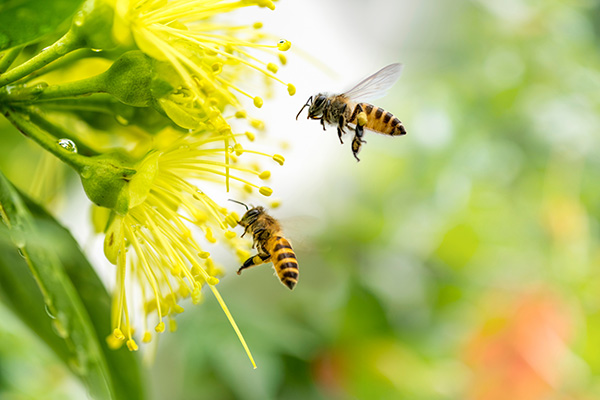EU taxonomy and protecting biodiversity

Protecting biodiversity is one of the objectives of the EU taxonomy. Biodiversity is diminishing as a result of human activity, and the purpose of the EU taxonomy is to help the business world to protect and restore biodiversity and ecosystems. Read more about what EU taxonomy is in our article here and learn about EU taxonomy and climate change mitigation in this article.
To comply with the EU taxonomy, a company must promote at least one of the taxonomy’s six environmental objectives. An activity that conforms to the taxonomy can either directly support an environmental objective or be a so-called enabling activity that enables an activity that directly supports the objective.
As not many businesses directly or indirectly promote biodiversity, we want to offer companies the opportunity to together support biodiversity in accordance with the EU taxonomy.
The six environmental objectives of the EU taxonomy are:
- climate change mitigation
- climate change adaptation
- sustainable use and protection of water and marine resources
- transition to a circular economy
- pollution prevention and control
- protection and restoration of biodiversity and ecosystems.

The significance of biodiversity for humans
Biodiversity is usually explored at three levels – genetic diversity, species diversity and ecosystem diversity. These three levels work together to create the complexity of life on Earth. Biodiversity can be compared to immunity: it helps nature to adapt to changing conditions. The more diverse our living environment is, the more resilient it is to diseases, climate change and natural disasters.
Biodiversity is vital also for humans. It is linked to everything in our lives: food, clean drinking water, raw materials, clean air, medicine and well-being. The decline in biodiversity therefore increases the risks related to things that are vital for us.
According to the IPBES report, the greatest causes of biodiversity loss worldwide are man-made changes in the use of land and sea areas (stemming from the social phenomena of overconsumption and population growth) overexploitation of animals and plants, climate change, pollution and alien species.
What we are doing to protect biodiversity in accordance to the EU taxonomy
Our activities promote two of the objectives of the taxonomy: we mitigate climate change and protect and restore biodiversity and ecosystems. As we create carbon sinks that are rich in biodiversity, we also create a habitat for potentially endangered species. In developing diversity, we utilize the latest research information and the know-how of our extensive partner network, such as the Environmental School of Finland Sykli and the Natural Resources Institute Finland.
For example, in forest management, we have agreed to leave rotten wood in place, as well as trees and vegetation that grow naturally in the area. Each tree species has its so-called companion species, which may include as many as two thousand organisms. It is important for the biodiversity that in addition to pine, other tree species grow on our planting sites. Rotten wood is an important part of the cycle of nature. It enables the presence of thousands of species that depend on it.
Going forward we will, when possible, restore the naturally moist areas of our planting areas into wetlands and explore the possibilities of paludiculture. Paludiculture can gain even more efficient carbon absorption than forest carbon sinks, and at the same time it provides habitats for many endangered species, for example for waterfowl that thrive in wetlands. About 50% of those species are endangered. Numerous endangered types of plants and insects also live in the wetlands. To preserve those species we need more wetland areas.
Do you want to take concrete actions to mitigate climate change and protect biodiversity? Plant trees with us!
Contact Us!
Do you want to find out how your company can offset its carbon dioxide emissions and participate in our carbon sink project? Send us a message and we'll get back to you as soon as possible or call Timo on +358 40 485 6607.
Company
Forest Gump Oy
Nousiaistentie 4 LT
00280 Helsinki
FINLAND
Invoicing
E-invoicing address: 003732031469
Operator:
Apix Messaging Oy
Operator ID: 003723327487
Terms and Conditions
Privacy Notice
